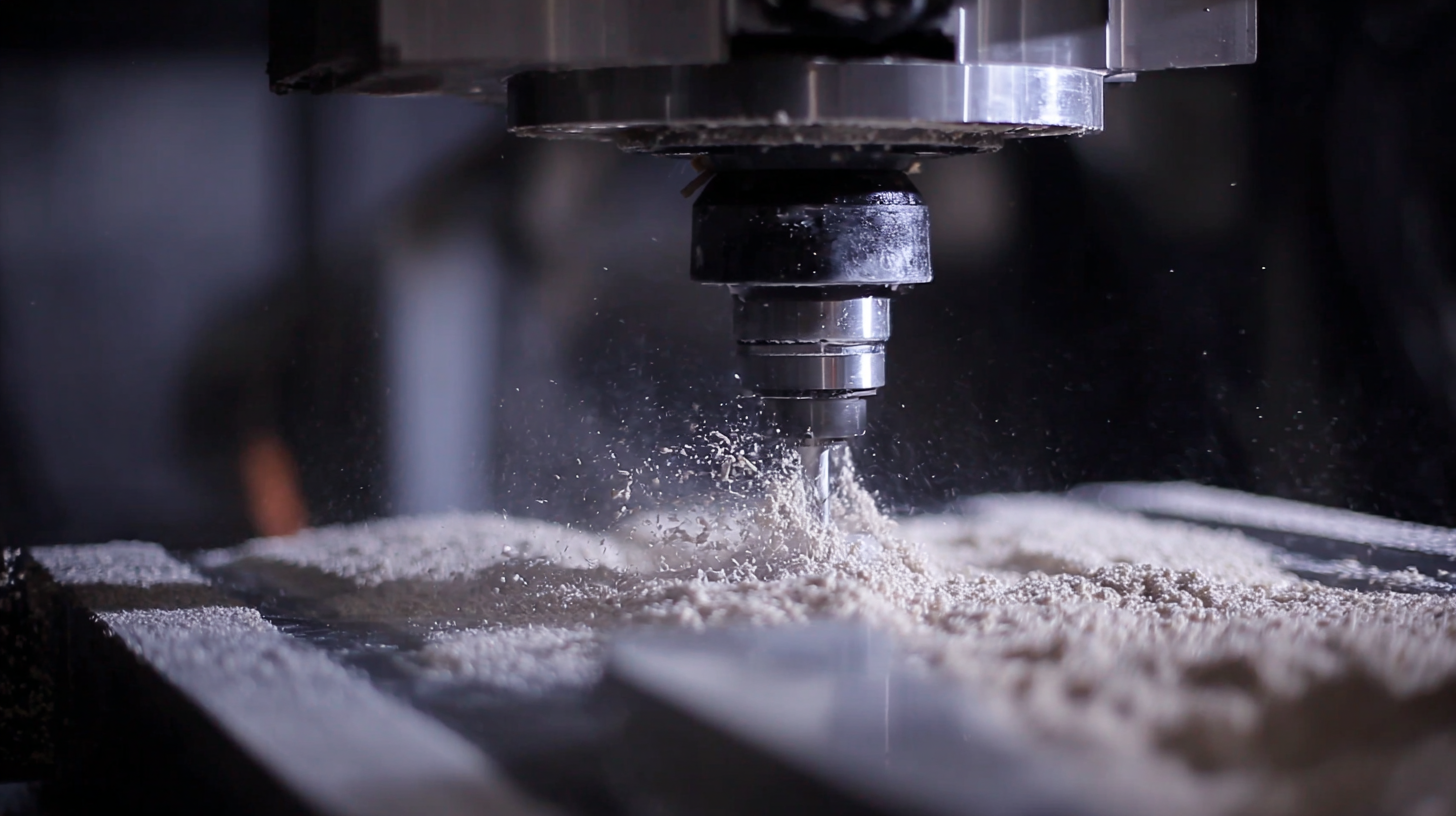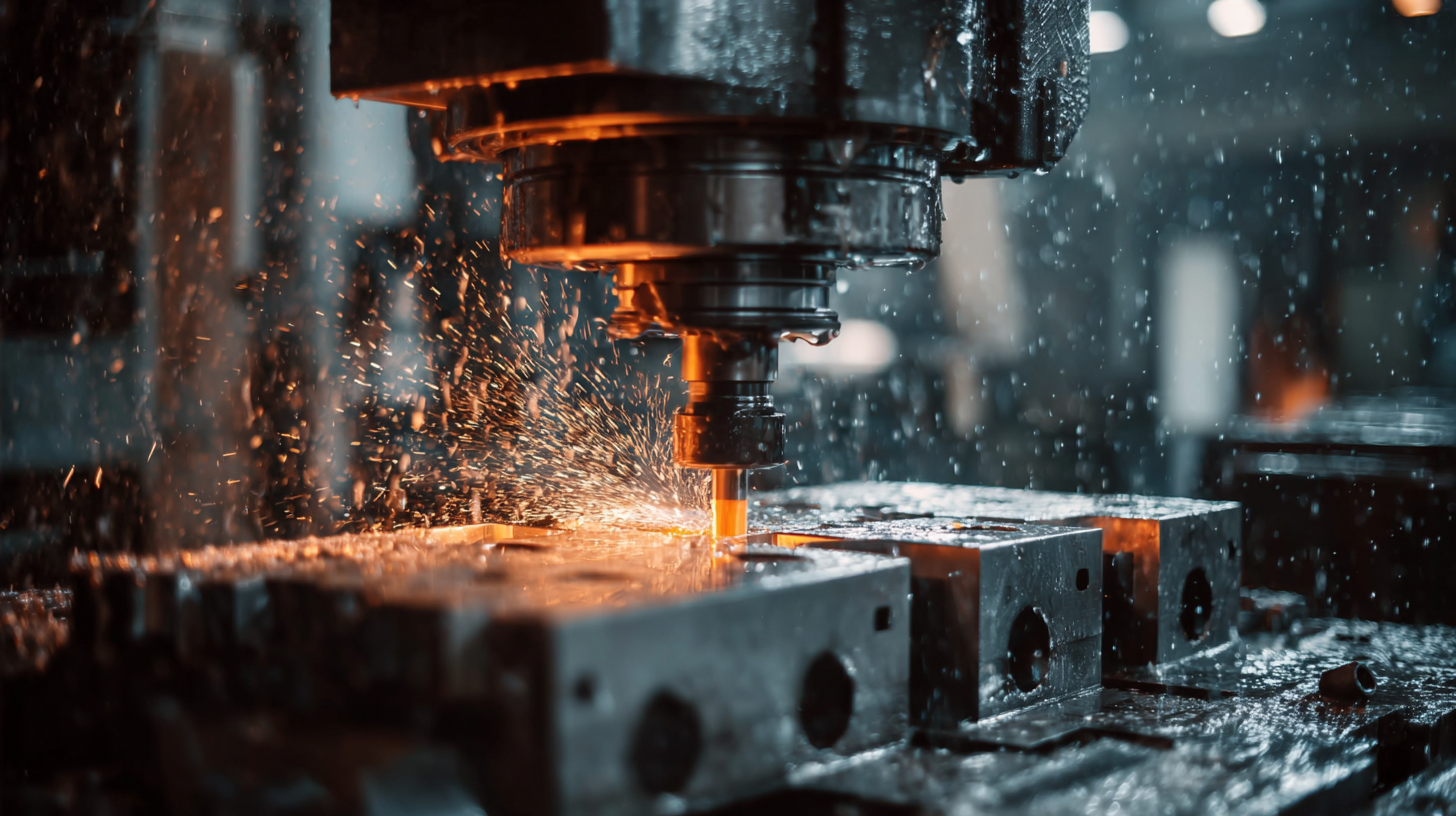How to Choose the Best Industrial Milling Machine for Your Business Needs
Choosing the best Industrial Milling Machine for your business needs is a crucial decision that can significantly impact your production efficiency and overall operational success. With an array of options available on the market, from small-scale models to large industrial setups, understanding the specific requirements of your business is essential. Whether you're in the manufacturing, automotive, or aerospace industry, selecting the right milling machine can enhance precision, productivity, and ultimately, profitability.

This blog will guide you through key considerations such as machine size, functionality, material compatibility, and cost-effectiveness, enabling you to make an informed choice that aligns with your business objectives. Join us as we explore the critical factors to take into account when investing in an Industrial Milling Machine, ensuring you find the perfect fit for your operations.
Understanding Industrial Milling Machines: Key Features and Benefits
Understanding industrial milling machines is crucial for any business involved in manufacturing or precision machining. These machines play a vital role in shaping materials to meet specific tolerances and specifications, ultimately impacting product quality and production efficiency. According to a recent report from IBISWorld, the industrial machinery manufacturing sector is projected to grow by 3.1% annually over the next five years, underscoring the importance of selecting the right milling machine to keep pace with industry advancements.
Key features to consider when choosing an industrial milling machine include the type of milling operations it can perform, such as vertical or horizontal milling, and the precise control systems it employs. Advanced CNC (Computer Numerical Control) technology is increasingly favored for its ability to deliver remarkable accuracy and repeatability. A study by Technavio indicates that the global CNC milling machine market is expected to grow by USD 1.93 billion during 2021-2025, highlighting the shift towards automated solutions that enhance productivity and reduce human error. Understanding these features and current market trends will be crucial for making an informed investment decision that aligns with your business needs.
Evaluating Your Business Needs: Assessing Production Volume and Material Types
When choosing the best industrial milling machine for your business needs, it is essential to evaluate your production volume and the types of materials you will be working with. According to recent data, the U.S. construction materials market was valued at $146.8 billion in 2022, with a projected compound annual growth rate (CAGR) of 3.7% over the forecast period. This growth indicates a steady demand for efficient milling machines capable of handling diverse materials and meeting increasing production volumes.
For businesses in sectors such as concrete block and brick manufacturing, understanding material specifications becomes critical. The concrete block and brick market is anticipated to grow significantly, with detailed analyses showing various applications ranging from residential to industrial. This diversification in application necessitates milling machines that can efficiently handle different types of material, whether it be cement blocks or various types of bricks, each requiring precise milling capabilities to ensure product quality and consistency.
Moreover, as industries adapt to rising market demands, such as the projected growth in the acetylene black market from $216.5 million in 2025 to $315.6 million by 2032 at a CAGR of 5.5%, investment in suitable milling equipment becomes imperative. Companies must align their milling capabilities with these evolving market trends to maintain a competitive edge while ensuring they adequately meet the specific material requirements of their production processes.
How to Choose the Best Industrial Milling Machine for Your Business Needs
| Criteria | Considerations | Example Values |
|---|---|---|
| Production Volume | High Volume Production | > 1000 units/day |
| Material Types | Metal, Plastic, Composite | Aluminum, PVC, Carbon Fiber |
| Precision Requirements | Tolerance Levels | ±0.01 mm |
| Machine Size | Physical Dimensions | 1000mm x 800mm x 1000mm |
| Budget | Initial Investment Cost | $20,000 - $50,000 |
| Maintenance | Technical Support and Upkeep | Annual maintenance cost: $2,000 |
Precision and Efficiency: The Role of Technology in Modern Milling Machines
In the ever-evolving industrial landscape, precision and efficiency in milling operations are paramount. Modern milling machines leverage advanced technology to improve both accuracy and throughput. According to a report by Technavio, the global milling machine market is projected to grow by over $1 billion from 2021 to 2025, highlighting the rising importance of precision in manufacturing. Technologies such as Computer Numerical Control (CNC) systems are at the forefront of this transformation, offering enhanced control and repeatability that is crucial for high-quality production.
When selecting a milling machine, consider the integration of precision technologies like automation and real-time data analytics. These features not only facilitate tighter tolerances but also optimize the entire milling process, saving both time and material costs. Tips for choosing the right machine include assessing the specific tolerances required for your projects and ensuring compatibility with existing systems. For instance, a machine with built-in sensors for feedback can significantly improve operational efficiency by identifying potential errors before they occur.
Investing in the latest technology is essential; this can include features such as spindle speed capabilities and tool management systems. These advancements not only enhance performance but also reduce downtime for maintenance. To ensure you make an informed decision, consult with industry professionals and review performance benchmarks of different models. Keeping abreast of market trends through reports and analysis can empower your business to choose a milling machine that meets your precision and efficiency needs.
Cost Analysis: Balancing Investment and Long-term Returns in Milling Equipment
Investing in industrial milling machines is a critical decision for businesses aiming to enhance their production capabilities while maintaining cost efficiency. A thorough cost analysis is essential to balance the initial investment with the anticipated long-term returns. By evaluating factors such as machinery pricing, operational costs, and maintenance expenses, businesses can make informed decisions that align with their financial objectives and production needs.

As the market for computer numerical control (CNC) machines expands, companies must also consider the growing innovation landscape, particularly in regions like China. This shift not only impacts pricing strategies but also the availability of state-of-the-art machinery that can improve efficiency and reduce production times. By staying updated on market trends and regional developments, businesses can better position themselves to leverage new technologies that promise substantial returns on investment in the milling sector.
Future Trends: How Industry 2025 Will Shape Milling Machine Innovations
The milling machine industry is on the brink of transformative advancements as we approach Industry 2025. Innovations are being driven by the increasing demand for precision and efficiency in manufacturing processes. As companies look to streamline operations and reduce costs, the next generation of milling machines will likely incorporate cutting-edge technologies such as artificial intelligence and IoT connectivity.

These advancements will enable real-time monitoring and predictive maintenance, leading to increased uptime and productivity.
Moreover, the focus on sustainability and eco-friendly practices is reshaping the milling landscape. Future milling machines are expected to adopt energy-efficient features and utilize sustainable materials, aligning with global environmental initiatives. This trend not only addresses rising energy costs but also enhances corporate responsibility, appealing to a growing segment of environmentally conscious consumers.
As businesses prepare for the transition towards 2025, selecting machines that support these trends will be crucial for maintaining competitive advantage in an evolving market.
